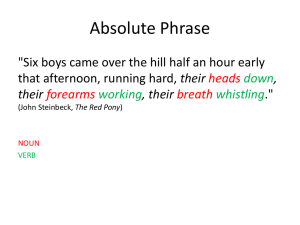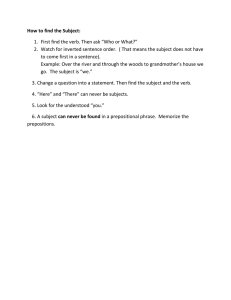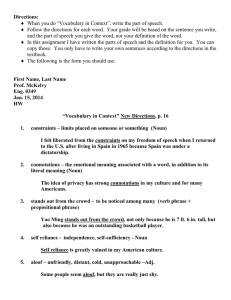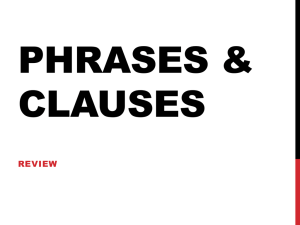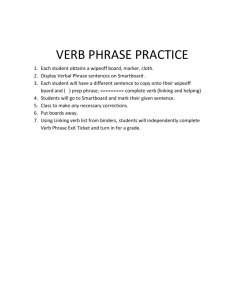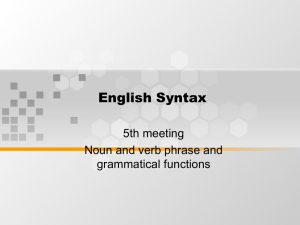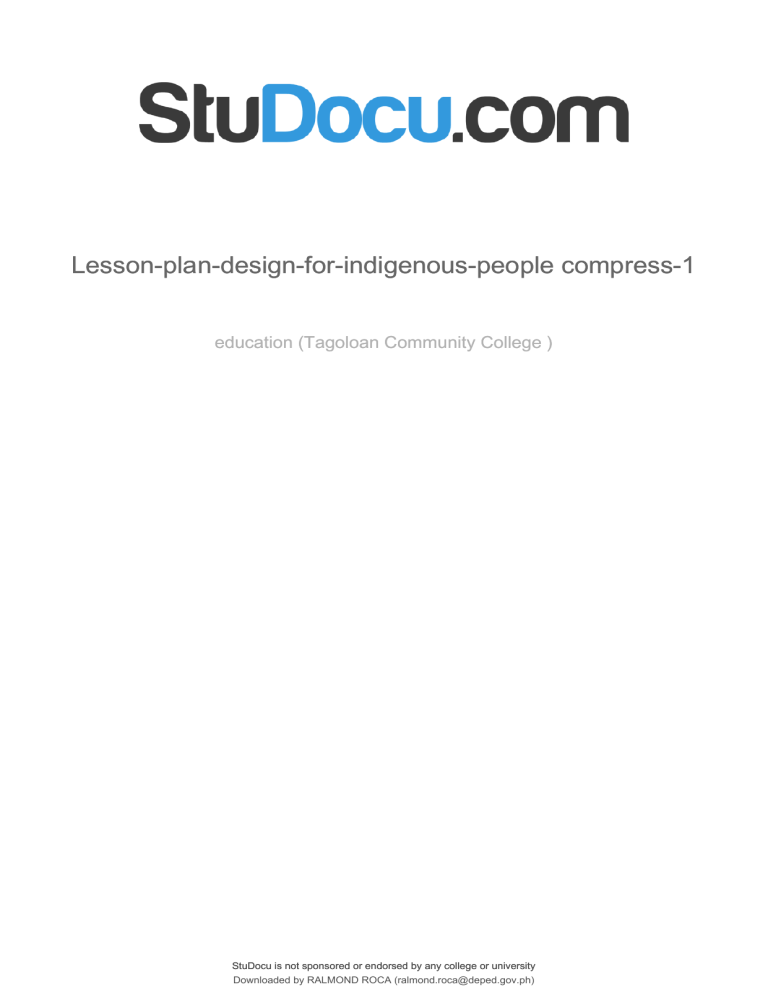
lOMoARcPSD|15552500 Lesson-plan-design-for-indigenous-people compress-1 education (Tagoloan Community College ) StuDocu is not sponsored or endorsed by any college or university Downloaded by RALMOND ROCA (ralmond.roca@deped.gov.ph) lOMoARcPSD|15552500 Republic of the Philippines Department of Education Region X Division of Misamis Oriental Tagoloan District TAGOLOAN CENTRAL SCHOOL Lesson Plan for IPs Learners Grade 3 I. OBJECTIVES LEARNING COMPETENCIES: EN3G-I-c-1: Use phrases and sentences appropriately and meaningfully. SPECIFIC LEARNING OUTCOMES/OBJECTIVES: At the end of the lesson, the students shall be able to; identify phrase and sentence; appreciate the different roles/duties of the people in the community; sustain interest in participating in group activities; participate in a task given; and construct sentences. II. CONTENT SUBJECT MATTER: Noun Phrase and Verb Phrase TIME ALLOTMENT: 60 minutes MATERIALS: Visual Aids Pictures REFERENCES: Retrieved from https://tinyurl.com/ssskdv2 on December 08, 2019. Retrieved from https://tinyurl.com/qmn2xev on December 08, 2019. Retrieved from https://tinyurl.com/yxxsbph4 on December 08, 2019. III. LEARNING PROCEDURES PRELIMINARIES o Prayer o Greetings o Checking of Attendance o Classroom Management REVIEW Ask the following questions: 1. What was our previous lesson about? 2. What have you learned about the previous lesson? Downloaded by RALMOND ROCA (ralmond.roca@deped.gov.ph) lOMoARcPSD|15552500 A. ACTIVITIES The teacher will present pictures. Then, the teacher will ask the student to describe who they see in the first picture, and what is the second picture doing (action). FIRST PICTURE SECOND PICTURE The/A beautiful girl The lovely children is dancing are playing B. ABSTRACTION Based on the activity we had earlier, what had you observed? When we are naming a person, a place, or a thing, it is called a NOUN. When the words we used describe an action, it is called a VERB. But as what you can see in the activity that was given earlier, the noun(s) and verb(s) were accompanied by other words. Therefore, when a noun or verb is accompanied with another group of words, it is called a PHRASE. A phrase is a small group of words. It is not a sentence because it does not convey a complete idea with a subject, verb and a predicate. Today, we will discuss the NOUN PHRASE and the VERB PHRASE. Noun Phrase – acts like a noun in the sentence. Verb Phrase – a group of main verb and helping verb within a sentence. Downloaded by RALMOND ROCA (ralmond.roca@deped.gov.ph) lOMoARcPSD|15552500 Example: Who can you see in the picture? Answer: An old woman (may vary) (NOUN PHRASE) What is she doing? Answer: is standing (may vary) (VERB PHRASE) C. APPLICATION The teacher will tell her students to make a sentence out of the picture. Then, underline the noun phrase once, and the verb phrase twice. (Note that answer(s) may vary) Example: The old women are talking. LET’S BEGIN! Answer: colorful A woman banig. is weaving a Answer: The Lumads were protesting. (additio nal details may be optional) Downloaded by RALMOND ROCA (ralmond.roca@deped.gov.ph) lOMoARcPSD|15552500 Answer: The Aetas were performing a dance ritual. Answer: The Aetas were reading. D. ANALYSIS The teacher will ask her students the following: What is the importance of knowing and understanding phrases? How can we apply this in our everyday lives (real-life context)? IV. EVALUATION Construct a sentence on the ac琀椀vi琀椀es/du琀椀es of these people at home or in the community. Box the Noun Phrase, and encircle the Verb Phrase. Example: My father Father:is plan琀椀ng corn. Mother Tribe Leader Children in the Community Women in the Community Men in the Community V. ASSIGNMENT Study on Adjectival Phrase and Prepositional Phrase. Prepared by: Checked by: MARIVIC M. BAGAIPO Teacher 3 FARINA L. BUHISAN Master Teacher 1 Downloaded by RALMOND ROCA (ralmond.roca@deped.gov.ph)
